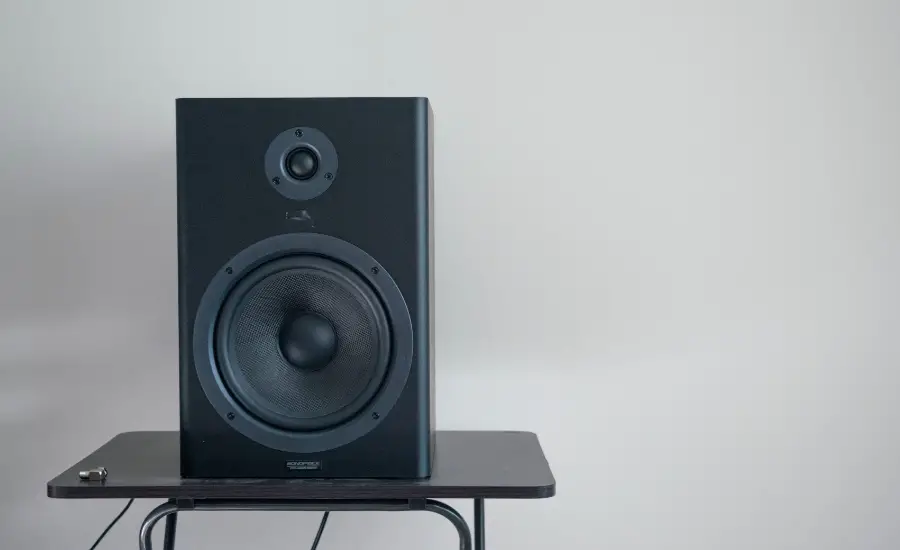Ceiling Speaker Sizing Guide – How to measure?
Without taking up much floor space, ceiling speakers are by far the best possible solution for your home surround sound. With that said, ceiling speakers can offer you a tidy option. Whether you’re just moving in, remodelling an existing room, or simply upgrading your home audio, ceiling speakers have got you covered!
Now, with so many options, picking one might be a bit overwhelming. For the record, there are three most common in-ceiling speaker sizes available in the market.
In case you’re confused about which might be the best for you, well no worries! I’ve got you covered. Let’s have a look at the different sizing options. Also, I’ll be discussing the factors that will help you to find the one you’ve been longing for!
Also Read: What Is Wireless Speaker?
In-Ceiling Speaker Size Comparison
As you already know, there are three popular In-ceiling speaker sizes. Let’s take a sneak peek on the ifs and buts of each, shall we?
1. Four-inch or smaller
In case you din’ know, in-ceiling speakers are typically easier to hide from the view. They are by far the best pick if aesthetics is your primary priority. However, you must also know that 4-inch in-ceilings are not the best when it comes to sound quality.
For the most part, they deliver poor output in lower and midrange frequencies. So, 4-inch in-ceilings are only appropriate for smaller spaces. However, 4-inch speakers are the most pocket friendly. If budget is the concern, this might not be that bad of a deal for you!
2. Six-Inches or medium
This is the most popular among all in-ceiling sizes. As per my tests, they tend to have the highest overall audio quality. In fact, they do provide some of the most decent audio quality currently on the market in 2023.
6-inch in-ceiling speakers might not be the most affordable, but they are the bank for your buck. Rest assured, you won’t regret it!
3. 8-Inches or Larger
For the record, the finest audio range and the deepest bass come from in-ceiling speakers of 8 inches or larger. If you’re a hardcore audiophile, you ought to have these!
They can be connected to your audio amplifier or receiver with ease! As a result, they deliver high-quality sound that can fill your room for a deep and immersive audio experience. It’s a no-brainer that these are significantly more expensive than the 4- and 6-inch variants. So, if you’re looking for that premium audio experience, you got to have these.
Also Read: In-Wall Vs. In-Ceiling Speaker – Pros & Cons
In-Ceiling Speakers: Factors to Consider
Make sure you check these boxes before you buy in-ceiling speakers for your home audio experience! Have a look-
Assessing Your Space
First things first, measure your room. This will help you determine the size and quantity of speakers you would need.
A pair of suitable speakers may be all that is required for spaces that are 100 square feet or smaller. On the flip side, at least two pairs are needed for spaces that are 225 square feet or bigger.
But, what about the spaces ranging from 100 to 225 square feet?
One set of in-ceiling speakers will be enough if you choose speakers that are the next size up. For a more well-balanced sound, you can even go for two sets of 6-inches.
Also Read: What Is A Surround Sound Channel?
Color
Though most ceiling speakers can be colored to match your decor and preferences, they all come with a white grille as standard. So, in-ceilings are fully customizable when it comes to color options!
Conventional Mono vs. Single Stereo
For starters, in-ceiling speakers come in single stereo or conventional mono formats. One tweeter and one bass driver are generally included with standard mono speakers. On the other hand, single stereos come packed with the left and right tweeters together along with the bass driver.
For spaces of at least 100 square feet and above, I advise you to use ordinary mono speakers. In contrast, feel free to use a single stereo speaker in spaces smaller than 100, such as a tiny bedroom.
Square vs. Round Speakers: What to pick?
For starters, the choice between round and square in-ceiling speakers will depend on your personal preferences, room design, and listening needs. However, you need to keep a few things in mind before picking one for your home.
If you prioritize aesthetics and ease of installation, I would say round speakers may be the better choice. Likewise, If you want more directional sound or have a more angular ceiling design, square speakers may be a better fit.
Now, it’s up to you to figure it out…..
Also Read: Passive Soundbar Vs. Center Channel Speaker – Which One Is Better?
Multi-Channel Features
The caliber of every component must be considered if you intend to use in-ceiling speakers in a multi-channel setup. However, the sound quality needs to be the same if you’re pairing them with floor or wall-mounted speakers.
As a result, 8-inch speakers could be too loud for your setup. So, one or two smaller speakers will deliver a much more consistent sound in this scenario. Otherwise, it can harm the ideal surround sound effect if your in-ceiling speakers produce a louder or quieter sound than your other speakers.
Electric Source
Right off the bat, a crucial component of your speakers is their power source factor. More power will be needed for larger in-ceiling speakers. Your speakers won’t function efficiently if your receiver or amplifier cannot supply enough power.
In some cases, things might not even function at all. So, make sure to purchase speakers compatible with your device if you currently own a receiver and do not wish to update.
Also Read: How To Turn A Normal Speaker Into Bluetooth Speaker
End Note
With tons of options available in the market, picking the right in-ceiling size for your home can be quite challenging. But, it shouldn’t be a concern anymore. All you need to do is consider what we have discussed today. Make sure you check those boxes before buying one for your home audio.
Lastly, feel free to choose the one that might be convenient depending on the size of the room and your budget. And, that’s all you need to know! Thanks for reading…





